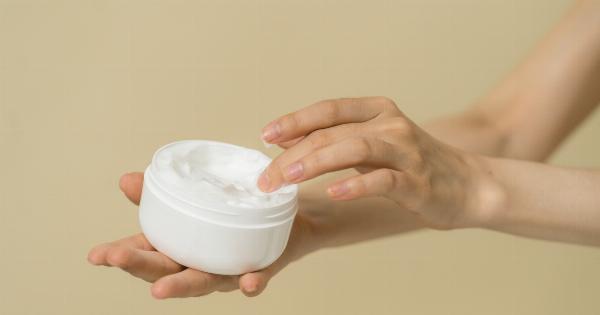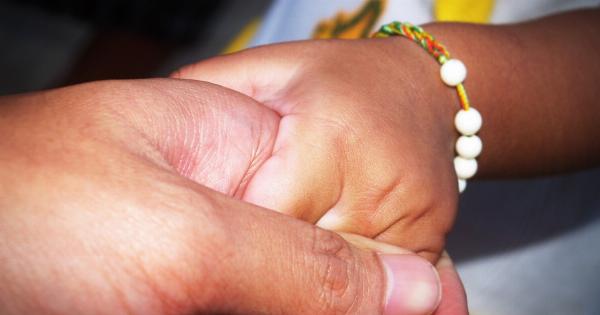Diaper dermatitis, also known as diaper rash, is a common condition that affects infants and toddlers. It is characterized by red, inflamed, and irritated skin in the diaper area.
This condition can be uncomfortable and painful for your little one, making it important to understand its causes, symptoms, and effective management strategies.
Causes of Diaper Dermatitis
Diaper dermatitis is primarily caused by prolonged exposure to wet or soiled diapers. The moisture softens the skin, making it more susceptible to damage. Other common causes include:.
- Friction: Constant rubbing of the diaper against the skin can cause irritation.
- Allergic reactions: Certain babies may be sensitive or allergic to the materials present in diapers or soaps, leading to a rash.
- Fungal or yeast infection: The warm and moist environment of the diaper creates a perfect breeding ground for fungi or yeast, causing an infection.
- Introduction of new foods: Introducing solid foods can sometimes lead to changes in bowel movements, resulting in diaper rash.
- Antibiotics: The use of antibiotics can disrupt the natural balance of bacteria in the diaper area, leading to an overgrowth of certain microorganisms.
Symptoms of Diaper Dermatitis
The symptoms of diaper dermatitis may vary depending on its severity. Common signs include:.
- Redness and inflammation in the diaper area.
- Irritation and discomfort.
- Formation of small red bumps, pimples, or blisters.
- Scaly or peeling skin.
- Possible presence of pus or fluid-filled sores.
Managing Diaper Dermatitis
Proper management of diaper dermatitis is essential to relieve your baby’s discomfort and promote healing. Here are some effective strategies:.
1. Keep the Diaper Area Clean and Dry
Regular diaper changes are key to preventing and managing diaper dermatitis. Clean the diaper area gently with warm water and a mild soap or cleanser that is specifically formulated for babies.
Pat the skin dry with a soft towel or allow it to air dry before putting on a fresh diaper.
2. Use Diapers That Fit Properly
Ensure that the diapers you use fit your baby well. Tight diapers can cause friction and increase the risk of developing diaper rash. Opt for diapers that are absorbent and allow proper airflow to keep the skin dry.
3. Apply a Barrier Cream
Avoiding direct contact between the skin and urine or stool is crucial. Apply a thin layer of a barrier cream or ointment containing zinc oxide to protect the skin from moisture. These creams create a protective barrier and promote healing.
4. Avoid Potential Irritants
Pay attention to the products you use in the diaper area. Avoid using heavily scented wipes, powders, or creams that may contain harsh chemicals or irritants. Opt for gentle and hypoallergenic options instead.
5. Give Diaper-Free Time
Allowing your baby to have some diaper-free time can help in preventing and managing diaper dermatitis. Exposing the skin to fresh air can aid in drying out any existing rash and prevent the development of new ones.
6. Consult a Pediatrician
If the diaper rash persists or worsens despite your efforts, it is important to consult a pediatrician. They can evaluate the severity of the rash and determine if additional treatment or medication is required.
Preventing Diaper Dermatitis
While diaper rash is common, there are steps you can take to prevent its occurrence:.
1. Change Diapers Frequently
Regularly changing wet or soiled diapers is crucial to keep the skin dry and healthy. Aim for changing diapers every two to three hours, or as soon as they are soiled.
2. Properly Cleanse the Diaper Area
Gently cleanse the diaper area during each diaper change using mild soap or cleanser and warm water. Avoid using wipes that contain alcohol or fragrance, as they can cause irritation.
3. Thoroughly Dry the Skin
After cleansing, ensure that the diaper area is completely dry before putting on a fresh diaper. Pat the skin gently with a soft towel or allow it to air dry.
4. Use Diaper Cream Preventively
Applying a thin layer of diaper cream or ointment with zinc oxide as a preventive measure can create a barrier between the skin and moisture, reducing the risk of diaper rash.
5. Choose Breathable Diapers
Opt for diapers made from breathable materials that facilitate proper airflow and reduce the risk of trapped moisture. This helps in keeping the diaper area dry and comfortable.
Conclusion
Diaper dermatitis can be a discomforting condition for your baby, but with proper understanding and management, it can be effectively controlled.
By following good hygiene practices, using skin-friendly products, and taking preventative measures, you can keep your baby’s delicate skin healthy and free from diaper rash.






























